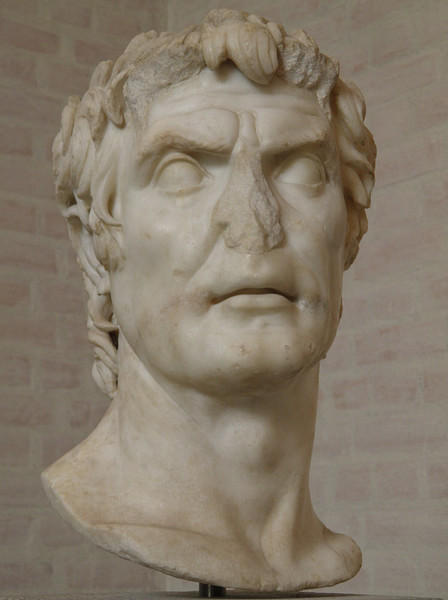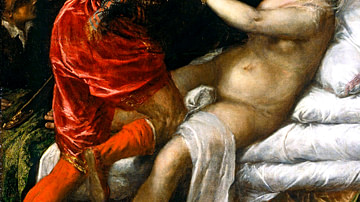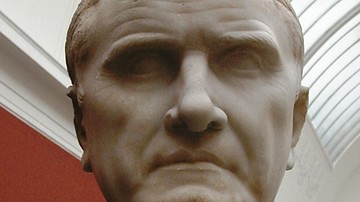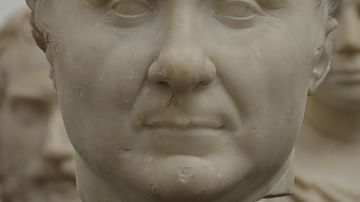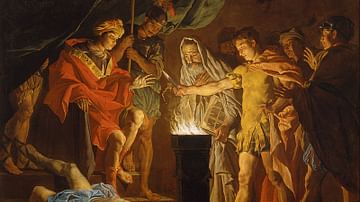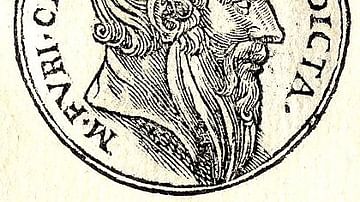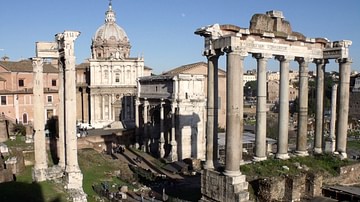
In the late 6th century BCE, the small city-state of Rome overthrew the shackles of monarchy and created a republican government that, in theory if not always in practice, represented the wishes of its citizens. From this basis the city would go on to conquer all of the Italian peninsula and large parts of the Mediterranean world and beyond. The Republic and its institutions of government would endure for five centuries, until, wrecked by civil wars, it would transform into a Principate ruled by emperors. Even then many of the political bodies, notably the Senate, created in the Republican period would endure, albeit with a reduction in power.
Myth & Legend
The years prior to the rise of the Republic are lost to myth and legend. No contemporary written history of this period has survived. Although much of this history had been lost, the Roman historian Livy (59 BCE – 17 CE) was still able to write a remarkable History of Rome – 142 volumes – recounting the years of the monarchy through the fall of the Republic. Much of his history, however, especially the early years, was based purely on myth and oral accounts. Contrary to some interpretations, the fall of the monarchy and birth of the republic did not happen overnight. Some even claim it was far from bloodless. Historian Mary Beard in her SPQR wrote that the transformation from monarchy to republic was “borne over a period of decades, if not, centuries.”
Prior to the overthrow of the last king, Tarquinius Superbus or Tarquin the Proud in 510 BCE, the history of the city is mired in stories of valor and war. Even the founding of the city is mostly legend and many people have preferred the myth over fact anyway. For years Rome had admired the Hellenistic culture of the Greeks, and so it easily embraced the story of Aeneas and the founding of Rome as penned by Roman author Virgil in his heroic saga The Aeneid. This story gave the Romans a link to an ancient, albeit Greek, culture. This mythical tale is about Aeneas and his followers who, with the assistance of the goddess Venus, escaped the city of Troy as it fell to the Greeks in the Trojan War. Jupiter's wife Juno constantly interfered with the story's hero Aeneas throughout the tale. After a brief stay in Carthage, Aeneas eventually made his way to Italy and Latium, finally fulfilling his destiny. His descendants were the twins Romulus and Remus – the illegitimate sons of Mars, the god of war, and the princess Rhea Silvia, the daughter of the true king of Alba Longa. Rescued from drowning by a she-wolf and raised by a shepherd, Romulus eventually defeated his brother in battle and founded the city of Rome, becoming its first king. So the legend goes.

Early Years
After Tarquin's exit, Rome suffered from both external and internal conflict. Much of the 5th century BCE was spent struggling, not thriving. From 510 BCE to 275 BCE, while the government grappled with a number of internal political issues, the city grew to become the prevailing power over the entire Italian peninsula. From the Battle of Regallus (496 BCE), where Rome was victorious over the Latins, to the Pyrrhic Wars (280 – 275 BCE) against Pyrrhus of Epirus, Rome emerged as a dominant, warring superpower in the west. Through this expansion, the social and political structure of the Republic gradually evolved. From this simple beginning, the city would create a new government, a government that would one day dominate an area from the North Sea southward through Gaul and Germania, westward to Hispania, and eastward to Greece, Syria and North Africa. The great Mediterranean became a Roman lake. These lands would remain under the control of Rome throughout the Republic and well into the formative years of the Roman Empire.
Government of the Republic
However, before it could become this dominant military force, the city had to have a stable government, and it was paramount that they avoid the possibility of one individual seizing control. In the end they would create a system exhibiting a true balance of power. Initially, after the fall of the monarchy, the Republic fell under the control of the great families – the patricians, coming from the word patres or fathers. Only these great families could hold political or religious offices. The remaining citizens or plebeians had no political authority although many of them were as wealthy as the patricians. However, much to the dismay of the patricians, this arrangement could not and would not last.
Tensions between the two classes continued to grow, especially since the poorer residents of the city provided the bulk of the army. They asked themselves why they should fight in a war if all of the profits go to the wealthy. Finally, in 494 BCE the plebeians went on strike, gathering outside Rome and refusing to move until they were granted representation; this was the famed Conflict of Orders or the First Succession of the Plebs. The strike worked, and the plebeians would be rewarded with an assembly of their own – the Concilium Plebis or Council of the Plebs.
Although the government of Rome could never be considered a true democracy, it did provide many of its citizens (women excluded) with a say in how their city was ruled. Through their rebellion, the plebeians had entered into a system where power lay in a number of magistrates (the cursus honorum) and various assemblies. This executive power or imperium resided in two consuls. Elected by the Comitia Centuriata, a consul ruled for only one year, presiding over the Senate, proposing laws, and commanding the armies. Uniquely, each consul could veto the decision of the other. After his term was completed, he could become a pro-consul, governing one of the republic's many territories, which was an appointment that could make him quite wealthy.
Magistrates & Officials
There were several lesser magistrates: a praetor (the only other official with imperium power) who served as a judicial officer with civic and provincial jurisdiction, a quaestor who functioned as the financial administrator, and the aedile who supervised urban maintenance such as roads, water and food supplies, and the annual games and festivals. Lastly, there was the highly coveted position of censor, who held office for only 18 months. Elected every five years, he was the census taker, reviewing the list of citizens and their property. He could even remove members of the Senate for improper behavior. There was, however, one final position – the unique office of dictator. He was granted complete authority and was only named in times of emergency, usually serving for only six months. The most famous one, of course, was Julius Caesar, who was named dictator for life.
Assemblies
Aside from the magistrates there were also a number of assemblies. These assemblies were the voice of the people (male citizens only), thereby allowing for the opinions of some to be heard. Foremost of all the assemblies was the Roman Senate (a remnant of the old monarchy). Although unpaid, Senators served for life unless they were removed by a censor for public or private misconduct. While this body had no true legislative power, serving only as advisors to the consul and later the emperor, they still wielded considerable authority. They could propose laws as well as oversee foreign policy, civic administration, and finances. Power to enact laws, however, was given to a number of popular assemblies. All of the Senate's proposals had to be approved by either of two popular assemblies: the Comitia Centuriata, who not only enacted laws but also elected consuls and declared war, and the Concilium Plebis, who conveyed the wishes of the plebeians via their elected tribunes. These assemblies were divided into blocks and each of these blocks voted as a unit. Aside from these two major legislative bodies, there were also a number of smaller tribal assemblies.
The Concilium Plebis came into existence as a result of the Conflict of Orders – a conflict between the plebeians and patricians for political power. In the Concilium Plebis, aside from passing laws pertinent to the wishes of the plebeians, the members elected a number of tribunes who spoke on their behalf. Although this “Council of the Plebs” initially gave the plebeians some voice in government, it did not prove to be sufficient. In 450 BCE the Twelve Tables were enacted in order to appease a number of plebeian concerns. It became the first recorded Roman law code. The Tables tackled domestic problems with an emphasis on both family life and private property. For instance, plebeians were not only prohibited from imprisonment for debt but also granted the right to appeal a magistrate's decision. Later, plebeians were even allowed to marry patricians and become consuls. Over time the rights of the plebeians continued to increase. In 287 BCE the Lex Hortensia declared that all laws passed by the Concilium Plebis were binding to both plebeians and patricians.
Rome's Growth
This unique government allowed the Republic to grow far beyond the city's walls. Victory in the three Punic Wars (264 – 146 BCE) waged against Carthage was the first step of Rome growing beyond the confines of the peninsula. After years of war and the embarrassment of defeat at the hands of Hannibal, the Senate finally followed the advice of the outspoken Cato the Elder who said “Carthago delenda est!” or “Carthage must be destroyed!” Rome's destruction of the city after the Battle of Zama in 146 BCE and the defeat of the Greeks in the four Macedonian Wars established the Republic as a true Mediterranean power. The submission of the Greeks brought the rich Hellenistic culture to Rome, that is its art, philosophy and literature. Unfortunately, despite the growth of the Republic, the Roman government was never meant to run an empire. According to historian Tom Holland in his Rubicon, the Republic always seemed to be on the brink of political collapse. The old agrarian economy could not and would not be successfully transferred and only further broadened the gap between the rich and poor.
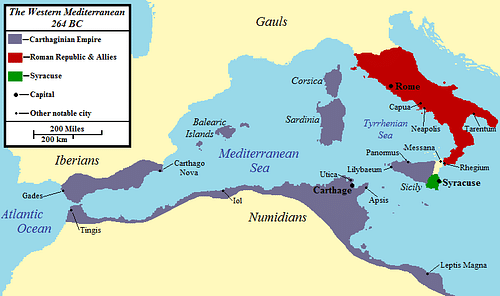
Rome, however, was more than just a warrior state. At home Romans believed in the importance of the family and the value of religion. They also believed that citizenship or civitas defined what it meant to be truly civilized. This concept of citizenship would soon be put to the test when the Roman territories began to challenge Roman authority. However, this constant state of war had not only made the Republic wealthy but it also helped mold its society. After the Macedonian Wars, the influence of the Greeks affected both Roman culture and religion. Under this Greek influence, the traditional Roman gods transformed. In Rome an individual's personal expression of belief was unimportant, only a strict adherence to a rigid set of rituals, avoiding the dangers of religious fervor. Temples honoring these gods would be built throughout the empire.
Elsewhere in Rome the division of the classes could best be seen within the city walls in the tenements. Rome was a refuge to many people who left the surrounding towns and farms seeking a better way of life. However, an unfulfilled promise of jobs forced many people to live in the poorer parts of the city. The jobs they sought were often not there, resulting in an epidemic of homeless inhabitants. While many of the wealthier citizens resided on Palatine Hill, others lived in ramshackle apartments that were over-crowded and extremely dangerous – many lived in constant fear of fire and collapse. Although the lower floors of these buildings contained shops and more suitable housing, the upper floors were for the poorer residents; there was no access for natural light, no running water, and no toilets. The streets were poorly lit and since there was no police force, crime was rampant. Refuse, even human waste, was routinely dumped onto the streets, not only causing a terrible stench but serving as a breeding ground for disease. All of this added to an already disgruntled populace.
The Gracchus Brothers
This continuing struggle between the have and have nots would remain until the Republic finally collapsed. However, there were those in power who tried to find a solution to the existing problems. In the 2nd century BCE, two brothers, both tribunes, tried but failed to make the necessary changes. Among a number of reform proposals, Tiberius Gracchus suggested giving land to both the unemployed and small farmers. Of course, the Senate, many of whom were large landowners, vehemently objected. Even the Concilium Plebis rejected the idea. Although his suggestion eventually became law, it could not be enforced. Riots soon followed and 300 people, including Tiberius, were killed. Unfortunately, a similar destiny awaited his brother.
While Gaius Gracchus also supported the land distribution idea, his fate was sealed when he proposed to give citizenship to all Roman allies. Like his big brother, his proposals met with considerable resistance. When 3,000 of his supporters were killed, he chose suicide. The failure of the brothers to achieve some balance in Rome would be one of a number of indicators that the Republic was doomed to fall. Later, another Roman would rise to initiate a series of reforms. Sulla and his army marched on Rome and seized power, defeating his enemy Gaius Marius. Assuming power in 88 BCE, Sulla quickly defeated King Mithridates of Pontus in the East, crushed the Samnites with the help of the generals Pompey and Crassus, purged the Roman Senate (80 were killed or exiled), reorganized the law courts, and enacted a number of reforms. He retired peacefully in 79 BCE.
Fall of the Republic
Unlike the Empire, the Republic would not collapse due to any external threat but instead fell to an internal menace. It came from the inability of the Republic to adjust to a constantly expanding empire. Even the ancient Sibylline prophecies predicted that failure would come internally, not by foreign invaders. There were a number of these internal warnings. The demand of the Roman allies for citizenship was one sign of this unrest – the so-called Social Wars of the 1st century BCE (90 – 88 BCE). For years the Roman allies had paid tribute and provided soldiers for war but were not considered citizens. Like their plebeian kindred years earlier, they wanted representation. It took a rebellion for things to change. Although the Senate had warned the Roman citizens that awarding these people citizenship would be dangerous, full citizenship was finally granted to all people (slaves excluded) in the entire Italian peninsula. Later, Julius Caesar would extend citizenship beyond Italy and grant it to the people of Spain and Gaul.
About this time the city witnessed a serious threat to its very survival when Marcus Tillius Cicero, the Roman statesman and poet, uncovered a conspiracy led by the Roman senator Lucius Sergius Catiline to overthrow the Roman government. Cicero also believed that the Republic was declining due to moral decay. Problems such as this together with fear and unrest came to the attention of three men in 60 BCE: Julius Caesar, Gnaeus Pompey and Marcus Licinius Crassus. Crassus had gained fame by his defeat of Spartacus and his followers in 71 BCE. Pompey had distinguished himself in Spain as well as in the East. Caesar had proven himself as an able commander. Together, the three men formed what historians have named the First Triumvirate or Gang of Three. For almost a decade they controlled both consulships and military commands. After Caesar left the office of consul in 59 BCE, he and his army moved northward into Gaul and Germania. Pompey became the governor of Spain (although he ruled from Rome) while Crassus sought fame in the east where, unfortunately for him, he was eventually defeated and killed at the Battle of Carrhae.
Growing tension between Pompey and Caesar escalated. Pompey was jealous of Caesar's success and fame while Caesar wanted a return to politics. Eventually these differences brought them to battle, and in 48 BCE they met at Pharsalus. Pompey was defeated, escaping to Egypt where he was killed by Ptolemy XIII. Caesar fulfilled his destiny by securing both the eastern provinces and northern Africa, returning to Rome a hero only to be declared dictator for life. Many of his enemies, as well as several allies, saw his new position as a serious threat to the foundation of the Republic, and despite a number of popular reforms, his assassination on the Ides of March in 44 BCE brought the Republic to its knees. His heir and step-son Octavian subdued Mark Antony, eventually becoming the first emperor of Rome as Augustus. The Republic was gone and in its ashes rose the Roman Empire.


